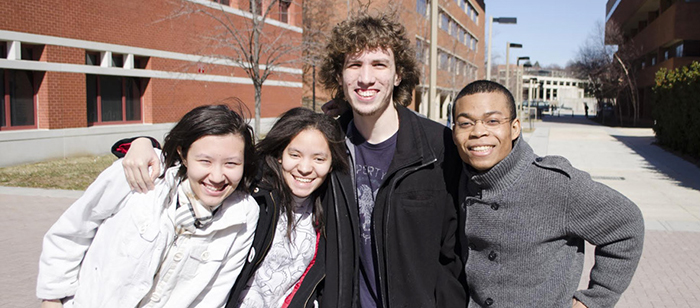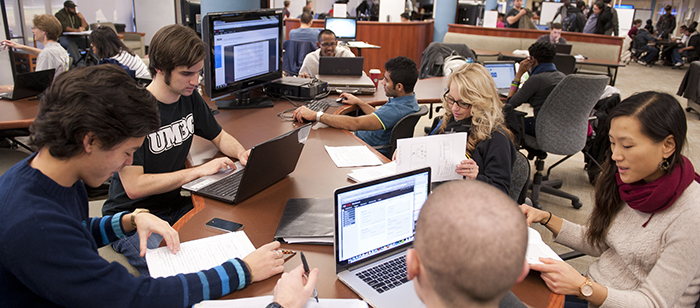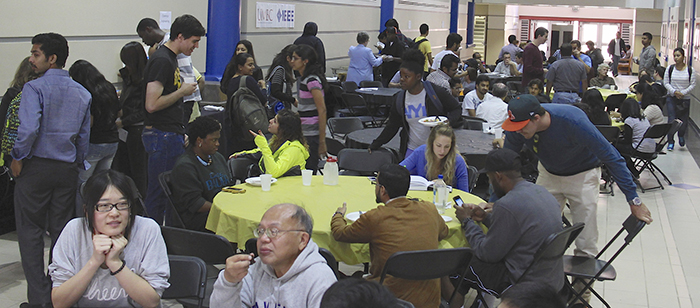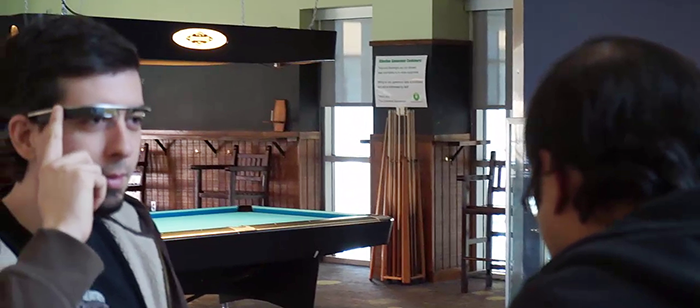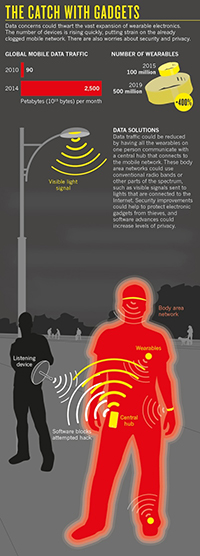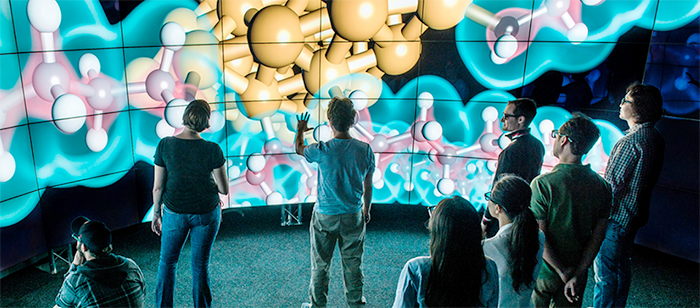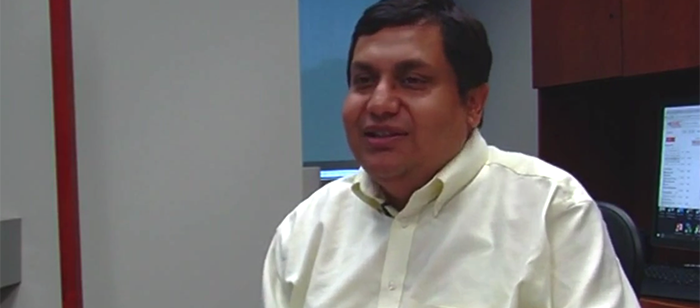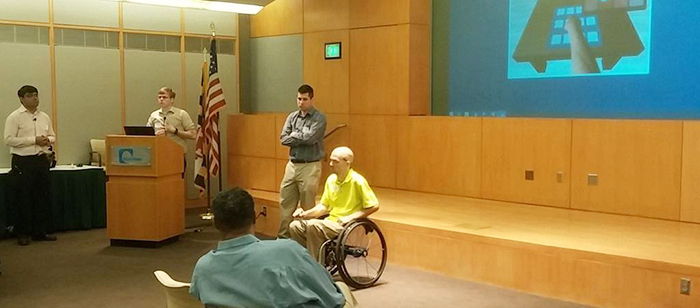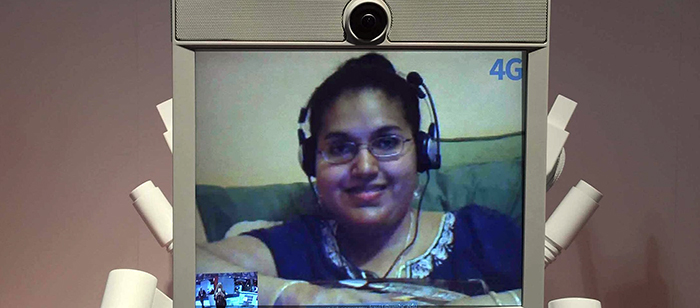Professors Jian Chen, Penny Rheingans, Karl Steiner, Michael Summers, and Craig Saper received a Major Research Infrastructure grant from the National Science Foundation to build PI2, an immersive virtual reality system to support research in interactive computing and digital humanities.

PI2 will be one of the most advanced visualization facilities of its kind in the mid-Atlantic region. The team sees it as enabling new research efforts on the visual exploration of data and knowledge discovery for biology, math, engineering, visual arts, and digital humanities as well as a tool to study and enhance the potential of the medium itself.
The instrument will feature a curved wall with a 27M pixel resolution made from multi-column, thin-bezel, and stereo-capable LCD panels with a six degree-of-freedom tracking system. The system will integrate and leverage many important characteristics: immersion, hybrid reality, high resolution, large field of view, large space and size, body-centric human-computer interaction, and support for heterogeneous data fusion.
The short-term goal is to accelerate science and education by addressing complex data analysis tasks which may have at least three sources: (1) big data, (2) environments inaccessible or too dangerous for humans so that simulation is necessary, and (3) high-fidelity environments for engineering and human behavior studies.
PI2 is expected to become an integral and vital part of a long-term vision for complex data analysis at UMBC, in effect, a human-computer symbiosis in which humans guide computers to identify features of potential interest that the computer then locates and displays. Developing this vision requires advances in multiple areas, including semi-automatic feature detection, visual representations, and interaction, where traditional display modalities limit what can be displayed and perceived. The instrument will facilitate broad interdisciplinary research and provides an innovative teaching and research environment for a diverse student population. Expectations include:
- Advancing multiple avenues of creative inquiry currently blocked or severely restricted will advance rapidly. The instrument encourages visual thinking among researchers in sciences, healthcare, biomedicine, national security, humanities, and education;
- Establishing appropriate levels of technologies needed for different classes of knowledge discovery analysis; and
- Assembling a set of research projects to investigate the use of the instrument with the expectation of creating a novel, demonstrably useful, rich, and expressive set of techniques for many cyber-physical and cyber-human systems.
PI2 will integrate advances in natural language processing, wearable computing, visualization, data mining, and interaction and its ability to synthesize, capture, create, and analyze visual information in unprecedented detail will transform the way analysts interact with visual information. Its capabilities will benefit multiple research areas at UMBC, including brain connectome, woodland ecology, interpersonal experiences, biomedicine, universal access, engineering physics, simulations, systems biology, education, digital humanities, green technologies, and unmanned-vehicle studies.
For more information, contact Dr. Jian Chen.
